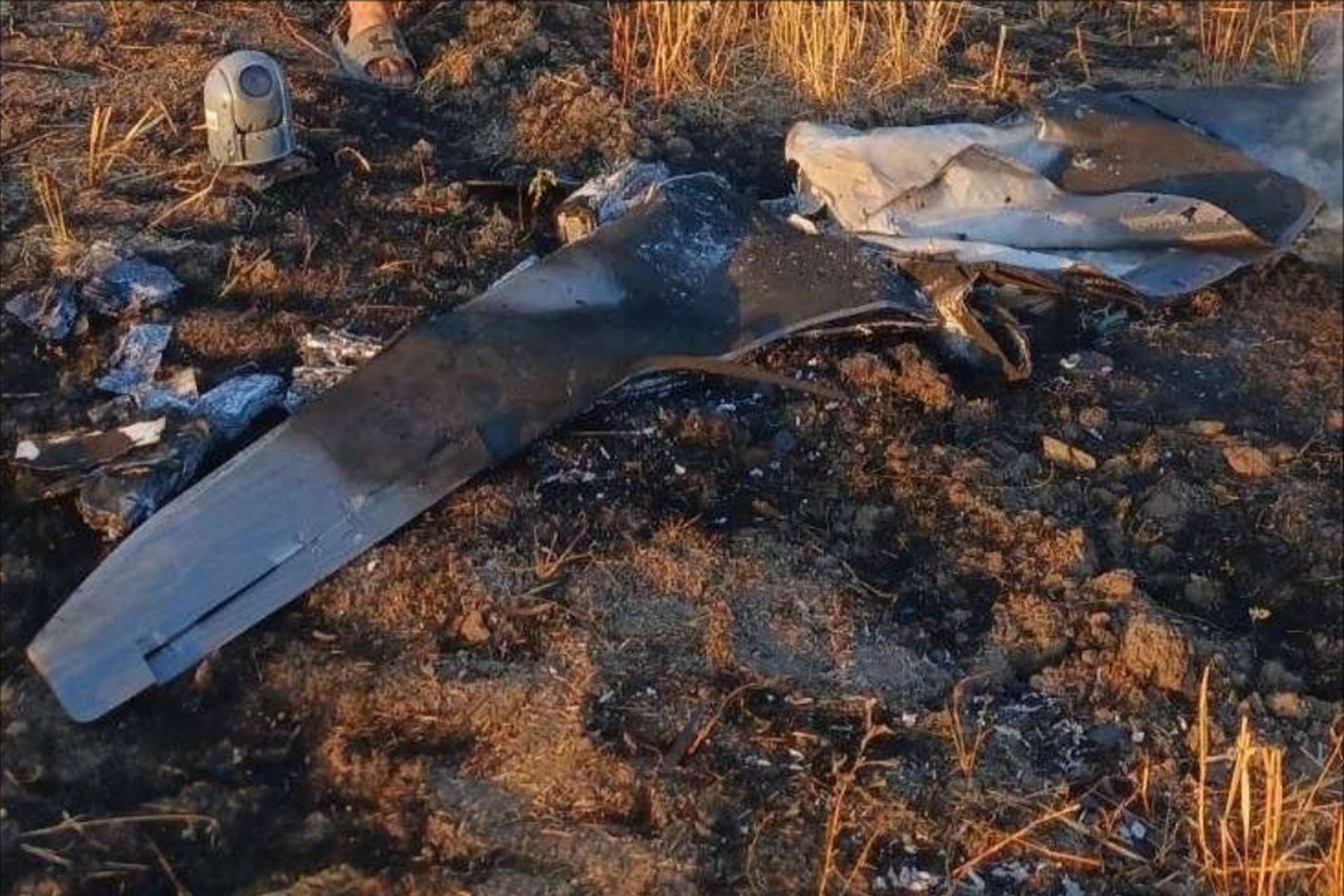Breaking News
Ukraine Announces Downing of 27 Iranian Shahed Drones.
Ukrainian defense forces have shot down 27 Shahed drones following a large-scale attack by Russian forces, though combat operations are still ongoing.
Follow Army Recognition on Google News at this link

Image of a Shahed previously shot down by Ukrainian forces, Illustration. (Picture source: Social Media)
On the night of September 5-6, Russian forces launched a coordinated attack that included one Kh-59 air-to-surface missile, one Kh-31P anti-radar missile, and 44 Shahed drones. Of these drones, 27 were successfully intercepted, while eight disappeared from radar, one returned to the occupied area of Donetsk Oblast, and several others continued to fly over northern Ukraine.
On its Telegram channel, the Ukrainian Air Force announced: "As of 08:00, 27 attack drones have been neutralized in combat operations. Eight drones disappeared from radar over Ukrainian territory, likely due to electronic warfare interference. One drone returned to occupied Donetsk Oblast, and several aerial targets, likely attack drones, are still being observed in northern airspace. Combat operations continue."
The Air Force specified that the missiles were launched from the temporarily occupied Luhansk region and Russia’s Bryansk Oblast, while the drones were launched from the Russian cities of Kursk, Primorsko-Akhtarsk, and from Cape Chauda in occupied Crimea.
The Shahed drone is a combat drone designed and manufactured by Iran, primarily used for military purposes in reconnaissance or attack missions. It belongs to a range of drones developed by Iran, the most well-known models being the Shahed-131 and Shahed-136. These drones are classified as loitering munitions, also referred to as "kamikaze" or "suicide drones," as they are designed to explode on impact after locating their target. Unlike traditional drones, which can carry out multiple missions, Shahed drones are typically used for a single attack, aiming to maximize damage on a specific target.
The Shahed-136, for example, is a small drone with a significant explosive payload, capable of traveling long distances before reaching its target. It flies at low altitude, making it difficult to detect by conventional air defense systems. It is often used to attack critical infrastructure, military positions, or vehicles. Its use has increased in modern conflicts, particularly in Ukraine, where Russia has made extensive use of these drones to strike Ukrainian targets after acquiring them from Iran.
The appeal of the Shahed drones for powers like Russia lies in their low production cost and relative effectiveness on the battlefield, especially when deployed in large numbers to overwhelm enemy defense systems. In addition to their destructive capacity, these drones are equipped with GPS-guided navigation systems, allowing them to reach their targets with precision. However, their vulnerability to electronic warfare and advanced defense systems has resulted in many Shahed drones being intercepted before reaching their objectives, as has been observed multiple times in Ukraine.
Various defense assets, including aircraft, air surveillance units, electronic warfare systems, and mobile fire groups from the Air Force and Ukrainian defense forces, were mobilized to repel the attack. Air defense systems were activated across several regions, including Kyiv, Kirovohrad, Vinnytsia, Dnipropetrovsk, Mykolaiv, Kherson, Poltava, Chernihiv, Kharkiv, Lviv, Donetsk, Zaporizhzhia, and Sumy.


























